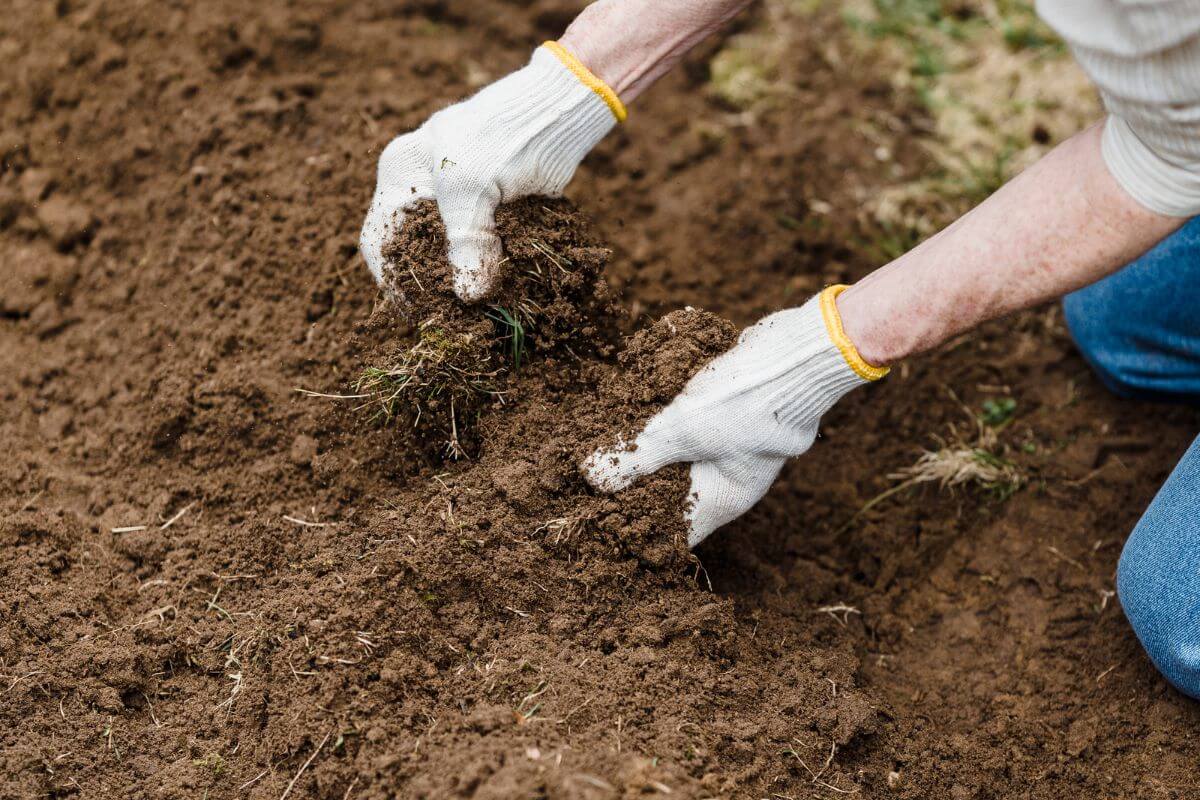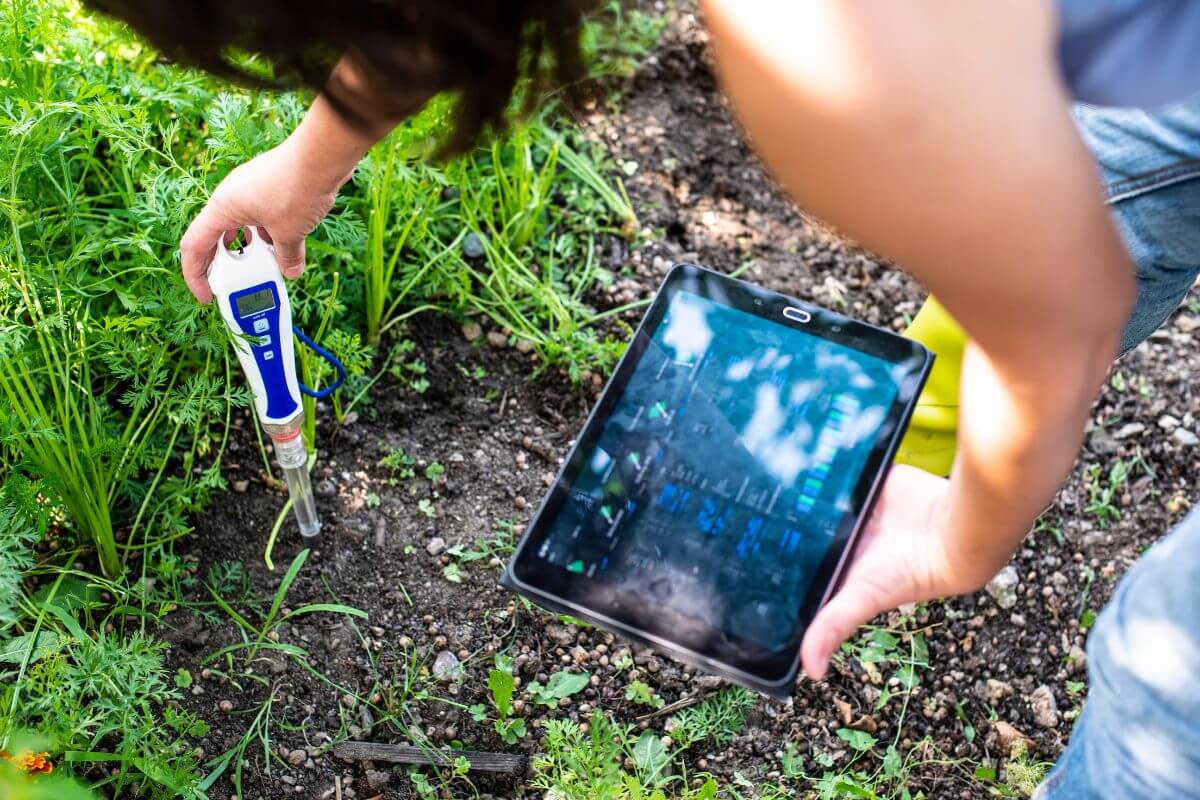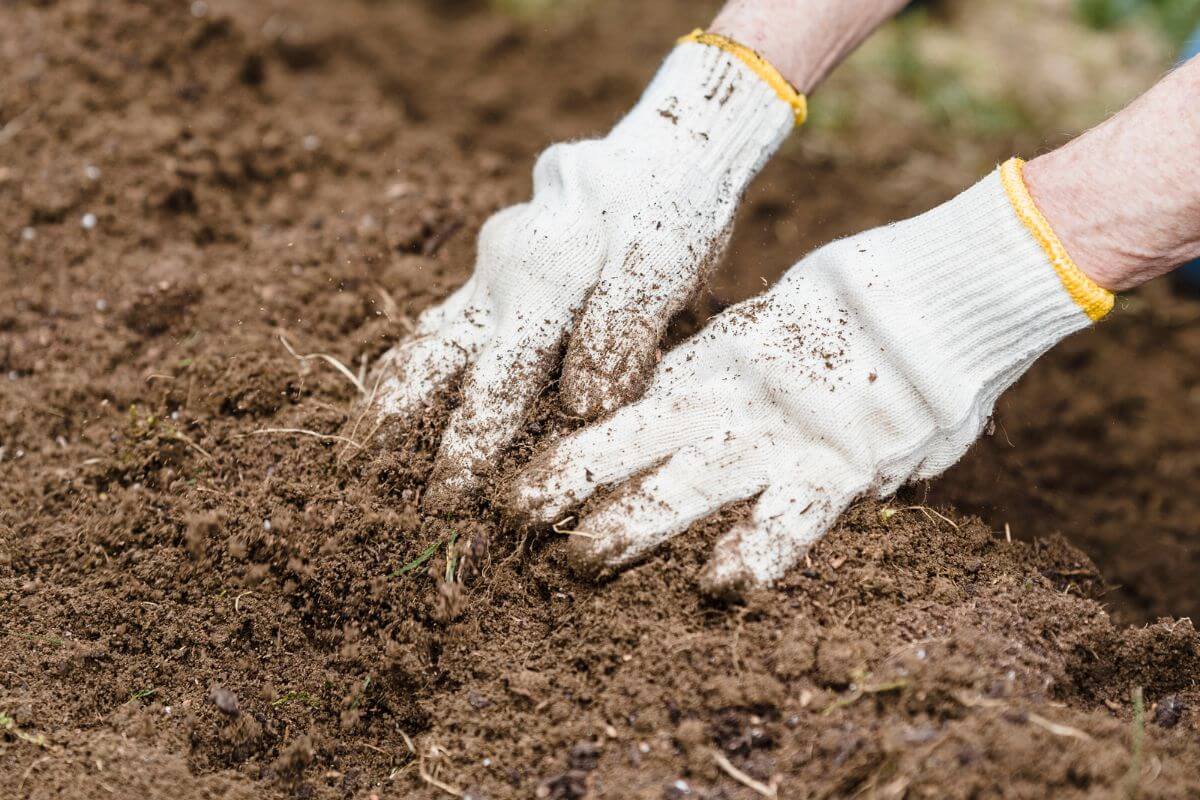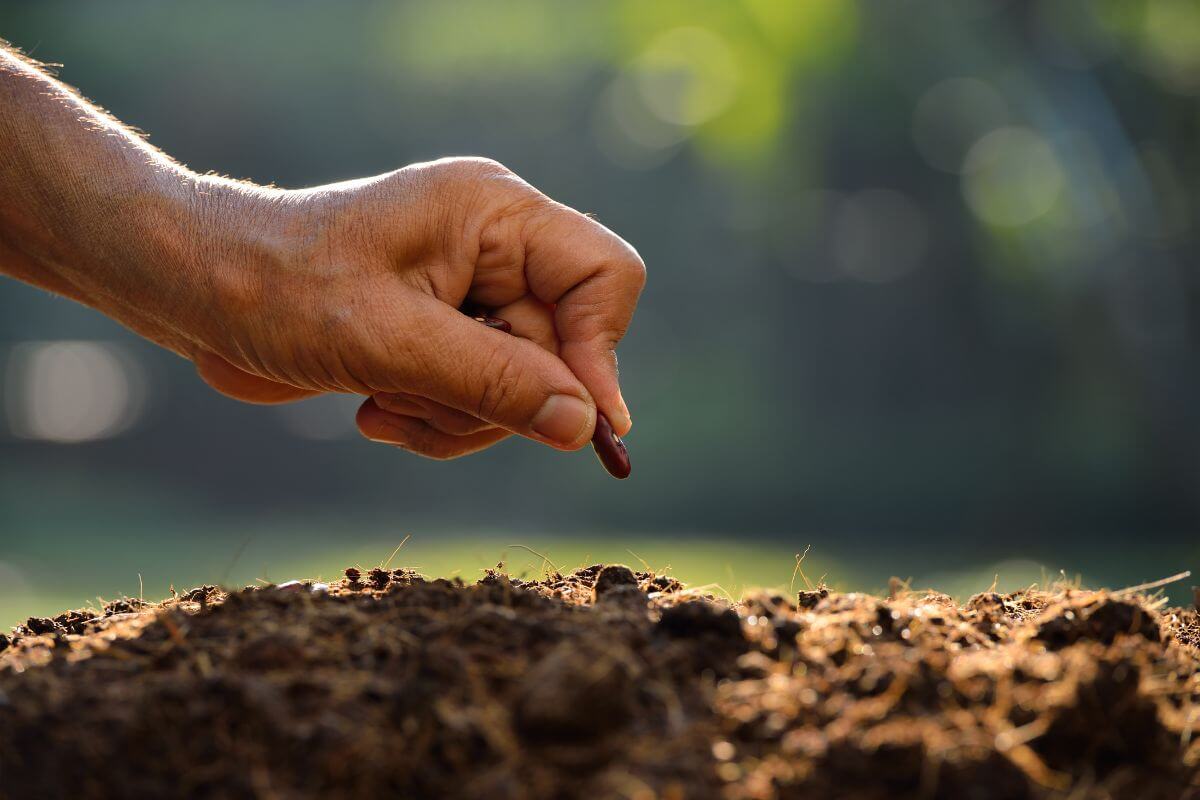If you want to start growing vegetables, herbs, fruits, flowers, or anything else, then you need to prepare the soil of your garden bed first.
All soil is not created equal. You don’t want to see your beautiful garden wither and die because you haven’t prepared your soil for planting, the foundation of your garden.
There is a lot to take into account when you are considering and preparing the soil, or your plants will not grow properly.
Do you stick to plants that will do well in your existing soil, or do you try and improve the soil to accommodate the plants you want? What do you want to use your garden for? How much money do you have to spend?
There are certain steps that you should follow before starting your garden. These steps will ensure that your plants grow healthy and strong.
- Related: What is Soil?
1. Understand the Soil

This is the first, and most important step. You need to know what type of soil you’re working with. Soil is where your plant roots will grow and need to be supported for successful plant growth.
There are six different types of soil that you may encounter, the top three being clay, silt, and sand.
Clay soil is clumpy and sticky. It is easily compacted when wet and in the heat it will bake hard. In the winter, it can become waterlogged due to the smaller particles. This is probably one of the most challenging soils for gardeners.
Silt is a fine soil that is made up of eroded rock that has been washed downstream and broken up. It is easily compacted, but is fertile and easy to work. Silty sold is good with water and nutrient retention.
Sandy soil has a gritty feel to it. It drains well and is easy to work with. But it dries out quickly, struggles to retain nutrients, and can be easily washed away.
The most ideal garden soil is a mix of all three of these soil types and is referred to as loam, or loamy soil. It retains the benefits of all three soils without the drawbacks.
Other types of soil are peat and chalk.
Peat soil is rare, and is made up of large amounts of organic material. It retains a lot of moisture, so decomposition of organic matter happens very slowly. You will need to add drainage channels if you plan to grow anything in it.
Chalk soil is very stony and lies directly on limestone or chalk bedrock.
Adding compost is the best method to improve poor soil, so you’ll want to start composting as soon as you can! Save your kitchen scraps and dead leaves for the compost heap, instead of just throwing them out in the trash.
Loam soil will also benefit from a regular addition of compost, so I wasn’t kidding about starting that compost pile!
2. To amend or not to amend soil?
Once you’ve identified your soil, you have a choice to make. Do you go with plants that suit your soil, or amend your soil to suit your plants?
Compost is the go-to soil amendment to solve most soil problems. But don’t think that a one-time addition of compost will suffice. Your soil will benefit from regular additions of compost, be it dug in or added as a mulch layer.
Be sure to use decomposed and aged compost. Don’t use fresh manure because it can damage plants and introduce diseases.
Even if you decide to go with plants that suit your soil, you can still add compost to give your plants nutrients and improve the condition of your soil as you grow.
Obviously, amending your soil by making your own compost can be a time-consuming process. But buying enough compost to amend your soil can be rather costly.
Compost really is the best soil amendment out there. But if you’re tight on time and money, I would stick to buying plants that will thrive in your existing soil. That way you don’t need to worry about amending soil as much.
If you have the patience to wait a year, then dig in compost regularly, or consider building a raised bed with the lasagna gardening method.
The benefit of adding compost and taking your time with it is that beneficial bugs and microorganisms will start to breed in your soil. That makes it much more fertile and easy to grow plants in.
Aged manure is another good soil amendment that you can add to your soil. Manure does have a higher level of salt content, so do be careful you don’t use too much.
3. Check the pH balance and nutrient content

Whether you’ve decided to amend your soil or not, this is an important step.
You can buy kits and devices online to check the pH balance of your soil, as well as the mineral content with this one online.
Most plants will be able to grow in a range of pH levels, but a slightly acidic soil is best, 6.0-7.0 pH.
- Related Article: How to Make Soil Acidic
You will want a good balance of nitrogen, phosphorus and potassium (NPK). Knowing the existing NPK ratio will help you choose your plants and know what organic materials will be best to improve your soil.
For example, blood meal will add nitrogen, bone meal will boost levels of phosphorus, and wood ask will increase potassium levels.
Dry or liquid fertilizer are two other ways to feed your garden. Dry fertilizers include things like peat moss, vermiculite, perlite, sand, rock dust, etc.
Liquid fertilizers come in different forms, such as water-soluble, slow release granules, and even fish emulsion.
- Read More: Types of Fertilizers
If you want to add in fertilizer, get organic fertilizer to avoid adding chemicals to your soil, garden, and plants. Organic gardeners and their vegetable gardens will go this route, because they don’t want chemicals in the food they eat.
4. Dig over the soil

This is commonly called tilling the soil, and there is some debate about whether it is useful or not. Personally, I think if you’re starting a garden, it will be useful.
The benefits to break up the soil include:
- Help remove weeds
- Allow new plants to put down roots easily
- Aerate the soil
Whether you’re laying lawn or starting a vegetable patch, digging over the area with a fork or spade will be beneficial. Dig to a dept of at least 8 to 10 inches.
One thing to keep in mind is not to till wet soil. Only till dry soil. Digging into wet soil can damage the root system of young seedlings and the soil structure. That could end up affecting plant growth.
5. Think about the layout
Once your soil is at a decent standard, you’ll want to start planning the layout of your garden.
It’s always better to plant vegetables close together than far apart. This allows for easier harvesting and less space between rows. It also means fewer pests and diseases spread through the air.
Plant crops in groups based on their maturity stage. If they mature quickly, place them near each other. If they take longer to mature, leave them further away.
Think about which areas are in shade and which are in full sun. You’ll also want to make sure any pathways between beds aren’t exposed to direct sunlight for long periods of time. This could cause them to dry out quickly.
There are a number of things to consider when planning and designing your garden.
6. Start planting!

Ok so this may seem like a long-winded process before you get to the fun part of actually growing plants, but it’s worth it.
Plants will not survive for long if they aren’t planned out, and you will be wasting your money by getting plants before your garden is ready. After all, you wouldn’t buy the fish before you’ve dug the pond!
Make sure your soil is well-prepared before you start planting in the spring.
Have a plan for where your plants will go before you buy them. That will give you the best chance at growing a successful garden.
Soil Preparation Final Thoughts
While it is tempting for beginner gardeners to just get out there and start planting your garden, you may be doubling your work load in the long run, as well as wasting your money and time.
Preparing healthy soil will prevent poor performance with your plants.
How to Prepare Soil for Garden FAQs
How do you prepare soil for a vegetable garden?
Prepare soil for a vegetable garden using composting methods such as turning, mulching, and cover cropping. These techniques help improve drainage, aerate the soil, reduce weed competition, and conserve moisture.
What should I use to fertilize my garden?
Fertilize your garden by using an appropriate amount of nitrogen and phosphorus, along with potassium. Nitrogen helps increase leaf size and fruit production; phosphorous promotes strong stems and flowers; and potassium encourages vigorous growth.
How do I prepare the ground for my garden?
Prepare the ground for your garden by adding organic matter to the topsoil. Organic material like compost improves water retention and reduces weeds. In addition, it provides nutrients that promote good health in your plants.
How can we prepare poor soil for planting?
You can prepare poor soil for planting by incorporating aged manure into the existing soil. Manure contains high levels of nitrogen, which makes it ideal for improving fertility. However, avoid applying too much fertilizer or manure because it can burn roots and inhibit root development.
What is a good soil mix for a vegetable garden?
A good soil mix for a vegetable garden is one that has plenty of humus mixed throughout the entire mixture. Humic acid binds together minerals within the soil, making them available to plant roots. It also increases the ability of the soil to hold onto water. The more humus present in the soil, the better able it is to retain moisture.
What is the best soil for a vegetable garden?
The best soil for a vegetable garden is rich loam soil containing lots of organic matter. Loamy soils have enough air pockets to allow oxygen to reach plant roots while still retaining adequate amounts of moisture. They contain large quantities of clay particles, which bind together other elements in the soil. Clay particles provide structure to the soil, helping it resist erosion.



